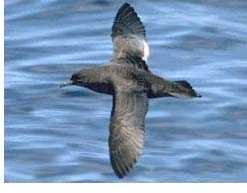Mark Carey (Department of Environmental Management and Ecology, La Trobe University, Wodonga, Australia) writing in the New Zealand journal Notornis, has looked at sexual size dimorphism, within-pair comparisons and assortative mating in the Short-tailed Shearwater Puffinus tenuirostris, a potential candidate for listing within ACAP.
The paper's abstract follows:
"Biometric studies of short-tailed shearwaters (Puffinus tenuirostris) indicate differences in body mass and linear measurements between sexes. Here the degree of sexual size dimorphism in 390 short-tailed shearwater adults is assessed and a sex-discriminating function is produced to improve methods for sexing live birds in the field. Analysis of body mass and linear measurements showed males to be significantly heavier and larger than female birds in all variables. The largest degree of sexual size dimorphism was in bill depth (7.5%) followed by body mass (5.1%). Bill depth plus total head length were the most accurate variables in a discriminant function model. Together, these 2 variables predicted sex with 84% accuracy. Bill depth alone predicted sex with 82% accuracy. However, application of a sex-discriminating model developed from another colony, did not correctly classify the sex of adult birds as accurately. This can be explained by the existence of significant geographical variation in body size within the species and reinforces the need for colony-specific sex discriminant models. Comparisons within-pairs revealed that bill depth is a more reliable indicator of sex, without the need for a discriminant function analysis. Contrary to previous studies, measurements of male and female partners showed no evidence of assortative mating in any character assessed. If short-tailed shearwaters mate assortatively then it may be based on traits other than structural size."

Short-tailed Shearwater. Photograph by Mark Carey
Reference:
Carey, M. 2011. Sexual size dimorphism, within-pair comparisons and assortative mating in the short-tailed shearwater (Puffinus tenuirostris). Notornis 58: 8-16.
John Cooper, ACAP Information Officer, 4 January 2012

 English
English  Français
Français  Español
Español